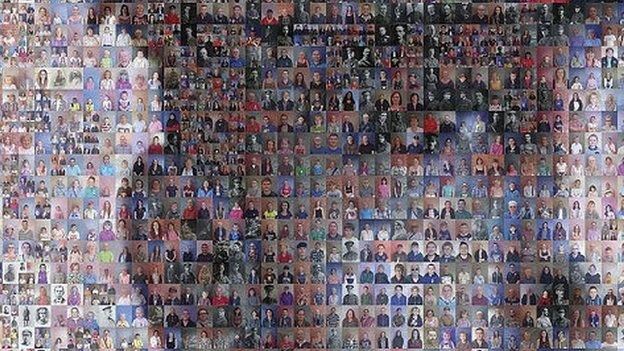Face of Suffrage: Hilda Burkitt selfie mosaic unveiled
- Published
Artist Helen Marshall appealed for people to send in photos of women to feature in the mosaic
A giant mosaic of a suffragette made up of thousands of selfies and pictures of "inspiring" women has been unveiled.
The 20m (65ft) portrait of Hilda Burkitt is on show at Birmingham New Street station, where she threw a stone at the prime minister's train in 1909.
Named Face of Suffrage, the artwork includes 3,724 photos from the public.
Artist Helen Marshall said: "The photo is the face of a smiling Edwardian lady, but her story is far from what we might expect."
Ms Marshall had appealed for selfies and pictures of women "you wish to celebrate" for the Face of Suffrage artwork marking 100 years since the first British women voted.
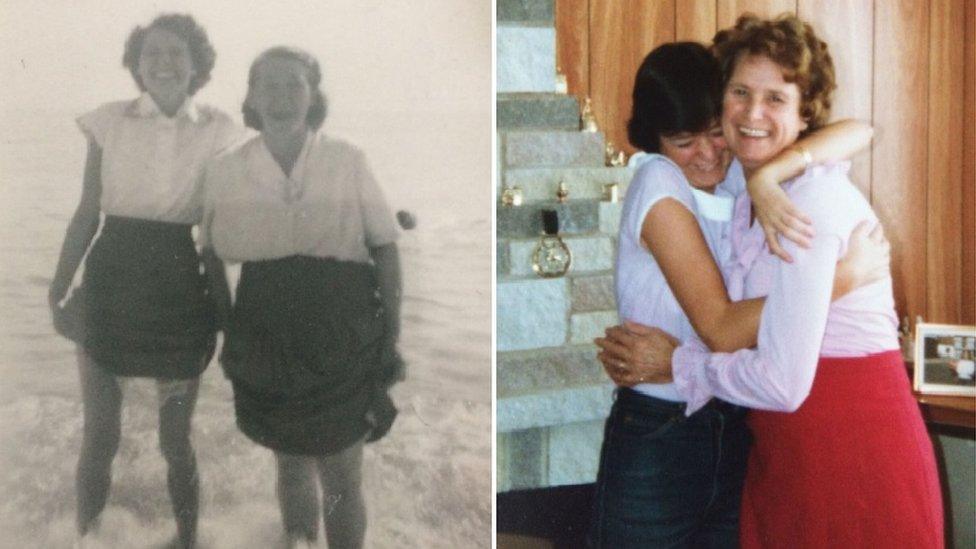
Sandra Whale, from Birmingham, submitted two photos: One featuring her, aged 18, with her mum Nancy Collins (right), who can be seen in the first picture posing with her own mother, Annie Bowden, at the seaside
Militant suffragette Burkitt,, external born in Wolverhampton in 1876, was jailed for breaking a window of Prime Minister Herbert Asquith's train.
She went on hunger strike and was force-fed 292 times during her sentence at Birmingham's Winson Green Prison.
Ms Marshall said she chose Burkitt as the subject of her piece after people she spoke to "really seemed to connect" with the picture the mosaic is based on.
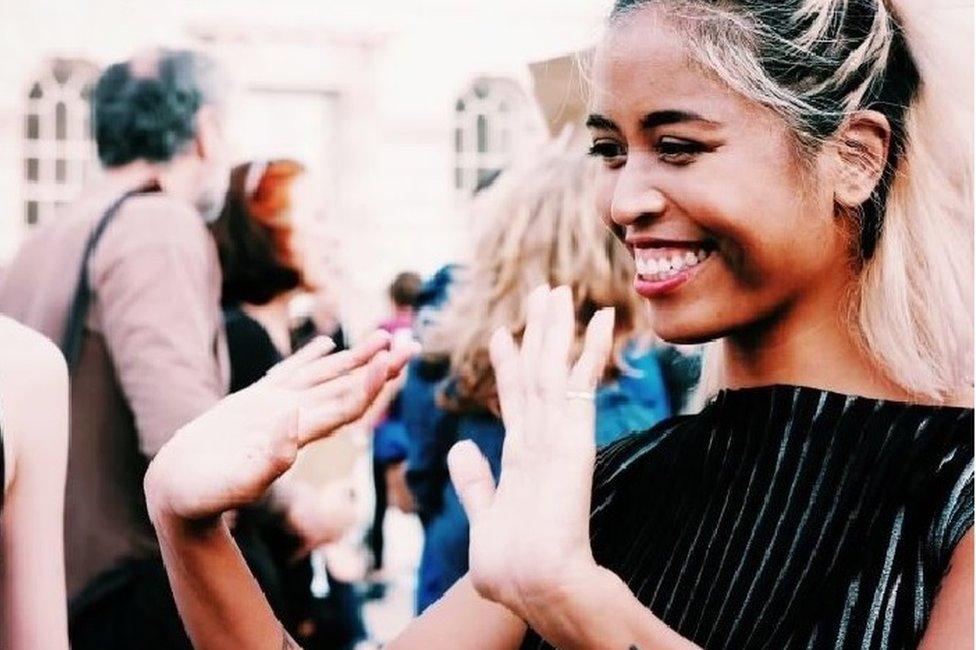
Mai Tassinari who lives in London submitted her photo because she "wanted to participate in the creation of a piece of art" and help mark women getting the right to vote
"She's looking at you and she's got a warmth. It was almost unanimous... so that's how I made my decision."
The photograph of Burkitt was taken by her sister Lillian, a fellow suffragette who ran a studio called Warwick Arts Company.
"It is such an amazing photo," Ms Marshall said.
Clare Roberts-Molloy, 41, said the artwork was "a true one-off" which recognised "the legacy of the suffrage movement and how we must continue to recognise women's contributions in history".
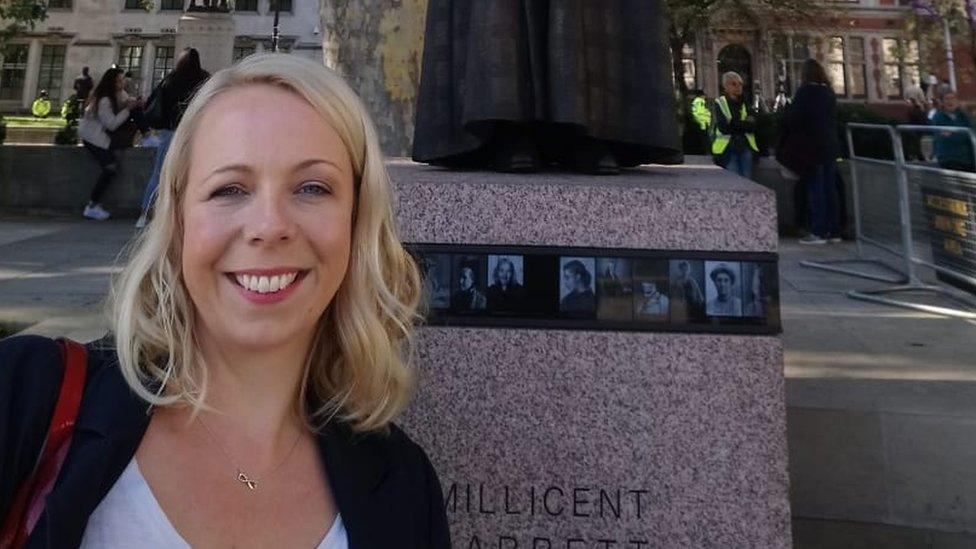
Clare Roberts-Molloy recently launched the West Midlands branch of the The Fawcett Society
The mother-of-three, who was also born and bred in Wolverhampton, said she wanted to take part to honour her roots.
"The artwork seemed to show how local people, when they're united, can really make a difference on a national level," she said.
The story of Hilda Burkitt
Ms Marshall said she understood Burkitt may be a divisive figure to some, but wanted to focus on her as an individual.
Her aim, she said, was to show suffragettes, often depicted as "middle class women in petticoats with placards" had suffered.
You may also be interested in:
"I had the opportunity to tell the traumatic side of what some women went through for people to interpret how they will," she said.
"But it is told through an image of gentle, dignified beauty," she said.
"That's the twist in the tale."
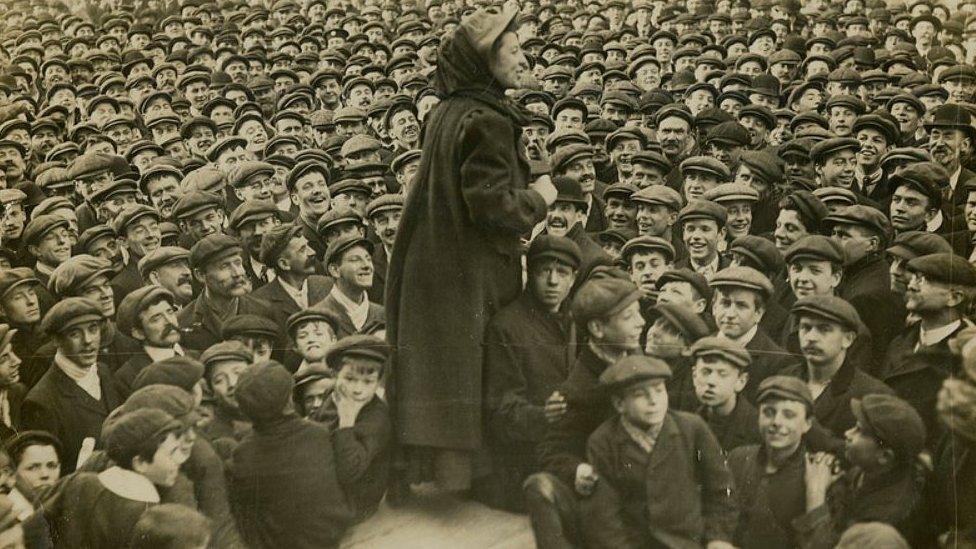
The artwork includes historical pictures which are on display at the Birmingham Hippodrome
The artwork will be display until 14 December, marking the centenary of when some British women voted in a general election for the first time in 1918.
- Published24 October 2018
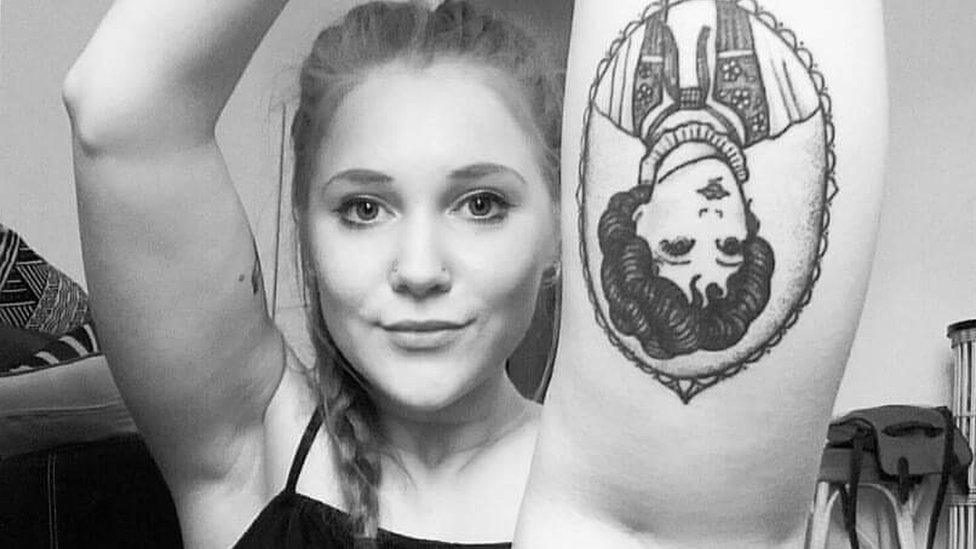
- Published24 September 2018

- Published8 June 2018
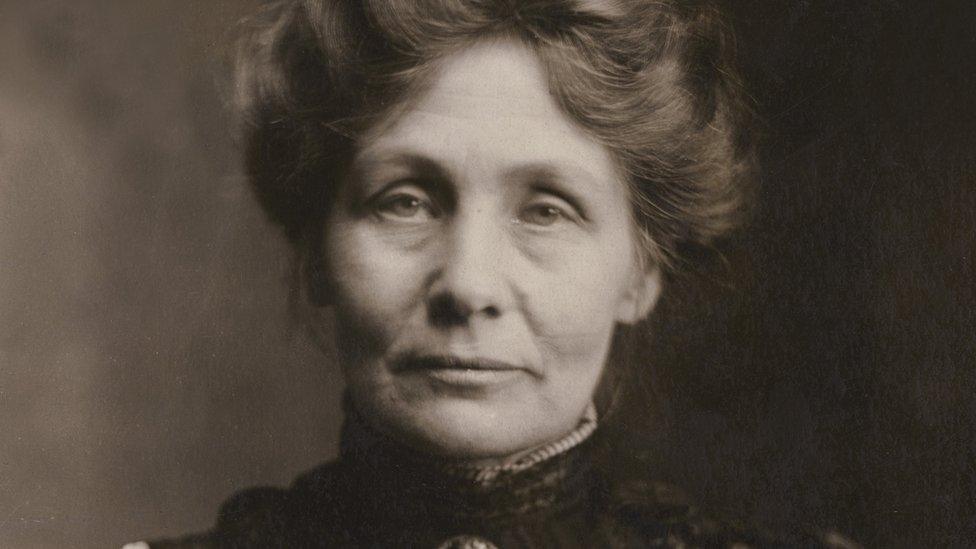
- Published6 February 2018
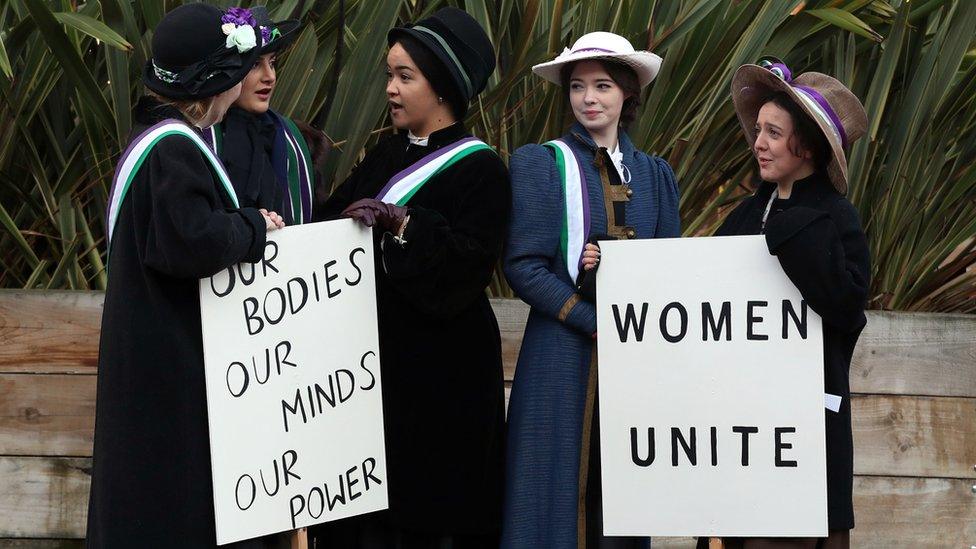
- Published25 November 2017
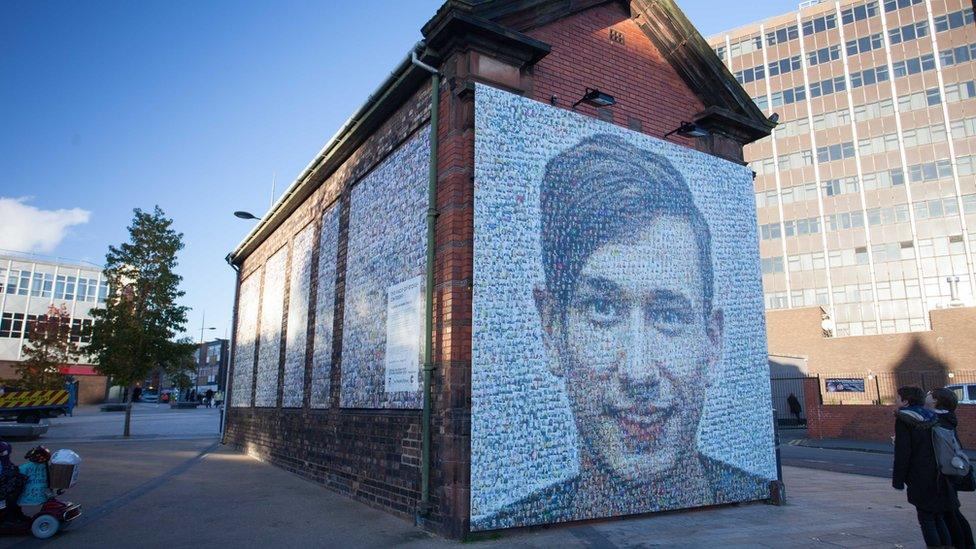
- Published7 November 2014
